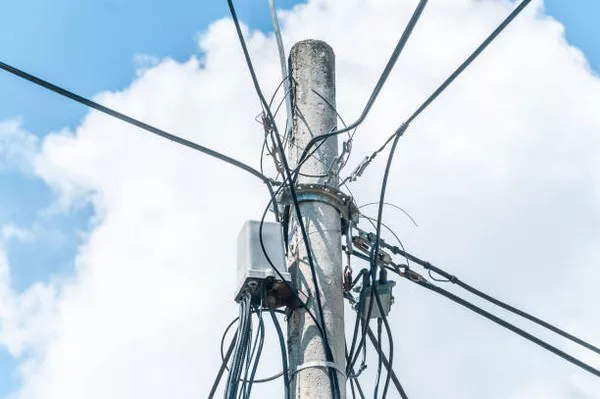Transformers are ubiquitous in electrical systems, playing a crucial role in voltage regulation, power distribution, and overall electrical efficiency. These devices operate on the principle of electromagnetic induction, converting electrical energy from one voltage level to another. However, like any complex piece of machinery, transformers require precise installation and maintenance to ensure optimal performance. In this article, we will explore the potential consequences of wiring a transformer backward, delving into the technical aspects and real-world implications.
Transformer Basics:
Before diving into the consequences of reversing transformer polarity, it is essential to grasp the fundamental principles of transformer operation. A transformer consists of primary and secondary coils wound around a common core. When an alternating current (AC) flows through the primary coil, it induces a magnetic field in the core. This magnetic field, in turn, induces a voltage in the secondary coil, thereby transforming the input voltage to a different output voltage based on the turns ratio of the coils.
Reversing Transformer Polarity:
Wiring a transformer backward essentially means connecting the primary coil to the secondary coil terminals and vice versa. This inversion alters the direction of the magnetic field induced in the core, resulting in a cascade of effects throughout the transformer and the connected electrical system.
Altered Voltage Transformation:
The primary function of a transformer is to change the voltage level of the input power. When wired backward, the transformer’s turns ratio is effectively reversed. Consequently, the output voltage becomes the input voltage, and vice versa. This unexpected change in voltage levels can lead to unpredictable consequences in downstream electrical equipment, potentially causing damage or malfunction.
Magnetic Field Reversal:
The magnetic field generated within the transformer’s core is critical to its proper functioning. Reversing the transformer’s polarity flips the direction of this magnetic field. This change can disrupt the natural flow of energy through the transformer, resulting in increased core losses, reduced efficiency, and, in extreme cases, core saturation.
Increased Core Losses:
Core losses, including hysteresis and eddy current losses, are inherent in any transformer due to the magnetization and demagnetization of the core material. When a transformer is wired backward, these losses can escalate, leading to increased heat generation within the core. Prolonged exposure to elevated temperatures can compromise the transformer’s insulation and overall longevity.
Implications for Connected Equipment:
Transformers are integral components of larger electrical systems, and their proper functioning is crucial for the health of connected equipment. Reversing transformer polarity can introduce unexpected voltage levels and electrical anomalies into the system, potentially damaging sensitive equipment such as motors, computers, and electronic devices.
Real-world Consequences:
In practical terms, the consequences of wiring a transformer backward can manifest in various ways, ranging from subtle issues to catastrophic failures. Here are some real-world scenarios illustrating the potential impact:
Equipment Damage:
Sensitive electronic devices, such as computers and control systems, are particularly vulnerable to unexpected changes in voltage levels. Reversing transformer polarity can expose these devices to higher or lower voltages than they are designed to handle, resulting in permanent damage or operational failure.
Motor Malfunctions:
Electric motors, commonly found in industrial applications, rely on a stable and consistent power supply. Reversing transformer polarity can lead to erratic voltage fluctuations, causing motors to operate inefficiently, overheat, or even burn out. This can have severe implications for manufacturing processes and industrial machinery.
Safety Hazards:
In addition to equipment damage, reversing transformer polarity poses safety risks. Unpredictable electrical conditions can create fire hazards, electrical shocks, or other dangerous situations, jeopardizing the well-being of individuals working with or around the affected equipment.
Preventive Measures and Corrective Actions:
To mitigate the risks associated with reversing transformer polarity, several preventive measures and corrective actions can be implemented:
Comprehensive Testing:
Before energizing a transformer, it is crucial to conduct thorough testing to ensure proper wiring. This includes verifying the polarity of the primary and secondary coils using appropriate testing equipment.
Clear Documentation:
Accurate documentation of transformer connections, including labeling of primary and secondary terminals, can significantly reduce the likelihood of wiring errors. Clear and detailed diagrams should be available for reference during installation and maintenance activities.
Transformer Protection Devices:
Installing protective devices, such as circuit breakers and fuses, can help mitigate the impact of reversed transformer polarity. These devices can quickly interrupt the circuit in the event of a fault, preventing further damage to the transformer and connected equipment.
Regular Maintenance:
Routine inspections and maintenance checks are essential for identifying potential issues before they escalate. Periodic testing of transformer parameters, including insulation resistance and turns ratio, can help detect problems early on and prevent catastrophic failures.
See Also How Does An Ac To Dc Transformer Work? A Complete Overview
Conclusion:
Wiring a transformer backward is a critical error that can have far-reaching consequences for electrical systems and connected equipment. Understanding the fundamental principles of transformer operation, the effects of reversing polarity, and implementing preventive measures are crucial steps in ensuring the reliability and safety of electrical installations. By prioritizing proper installation practices, routine maintenance, and adherence to safety guidelines, the risks associated with reversed transformer polarity can be minimized, safeguarding both equipment and personnel in diverse industrial and commercial settings.

